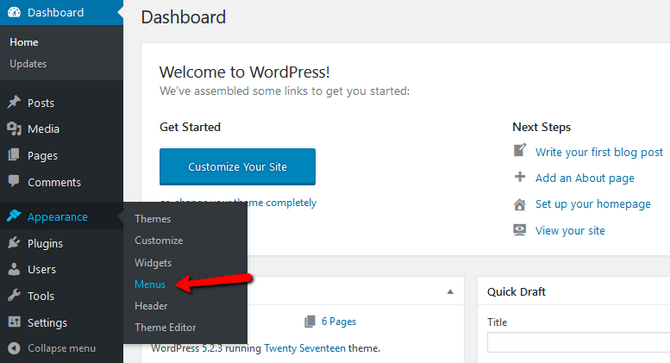Website navigation as simple as it might look, it’s one of the important elements of on-page optimization.
No matter how much you invest in your website development and SEO, if your visitors find it difficult to navigate through your site, then there’s going to be a high bounce rate and you may not earn as much as desired from your website.
According to Tech pally Magazine, Website navigations can be divided into two categories in shape, horizontal and vertical.
So that you can find out the best style of your website navigation for you, we have listed a few for you below.
Different Website Navigation Types
Horizontal website menus
Horizontal website menus are the most common types of websites worldwide.
They are located in the upper part of the page and can be structured in different ways:
Megamenu
The mega menu contains an overview of all main categories of your website and can be extended with a drop-down menu or a fly-out menu.
The name of the mega menu also lives up to it: Here you can use a “mega” amount of space and be creative, says chaktty.
With this type of website navigation, you should note that you can use it optimally for the desktop, however, with regard to mobile SEO and mobile usability, the presentation could be confusing.
Full-screen navigation
A stylish variant of the horizontal website menu is the hamburger menu as full-screen navigation.
As soon as you open the website navigation, the individual menu items appear in the middle of your screen and are in focus, while the rest of the website fades into the background or even becomes invisible.
Multi-level navigation
In combination with the mega menu, the individual sub-categories can be arranged in successive tiers as a multi-level. But multi-level navigation is also possible as a hamburger menu.
Full-width tab navigation
The full-width tab navigation already contains the intended content of your website in its individual main categories.
This type of website navigation is particularly suitable for websites with informational content or generally websites that do not produce nested content.
Example of good website navigation: The most important main categories of the website are displayed in the navigation
Example of a site navigation drop-down menu. The clear division into the various subcategories
Vertical website menus
Vertical website menus are especially important for the mobile display, as they save space and still contain all the essential points.
Here, too, mega menus are often used, i.e. the three bars that are arranged at the top left or right.
There are also various display options – whether fly-outs, dropdowns or expanded with icons.
At businesspally website development vol. 3.0 we have summarized the options you have when you want to design a vertical website menu, and part of it is here below.
Mobile hamburger menu
The classic menu variant of the hamburger menu is of course also available for the smartphone and is still one of the most popular ways of displaying website navigation.
Here, too, the hamburger menu is usually arranged at the top left or right and opens the menu lengthwise after a click.
Pull-down menu
With a pull-down menu, the user can pull the menu from top to bottom – here, too, the entire space of the smartphone display is used, says businesspally editors.
Button navigation
An increasingly popular way of navigating websites is button navigation.
Here icons are used in the top menu, which makes it easier for the user to find what he/she is looking for.
Summary
There are different types of website navigation menus. You should consider your target audience before choosing the menu style on your website.
Are your audience reading from a right side or left, are they young or old, are they tech-savvy or not.
These and many other questions should be asked beforehand. You should also do an A/B test or ask your visitors for feedback on their viewing experience, and use the data to improve your website.

